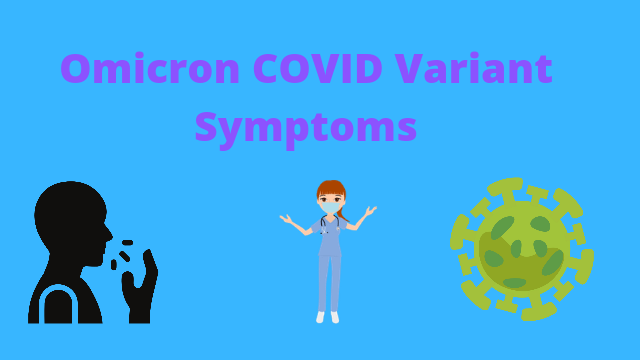The 2 most visible symptoms in Omicron patients

The Omicron variant is spreading faster than the delta variant of COVID-19, but on the basis of various studies done so far, it is said that hospitals in Omicron compared to Delta The risk of admission and death is very low. But still it is wise to stay away from Omicron, as it spreads 4 times faster than Delta. The symptoms of Omicron are similar to the symptoms of a cold. Preliminary studies have shown that this new variant is quite mild, but symptoms like mild fever, sore throat, extreme body pain, night sweats, vomiting and loss of appetite may indicate the presence of Omicron in the body.
On the basis of study and research, new symptoms of Omicron are coming out. On the basis of the findings of various studies, 2 such symptoms have come to the fore, which are seen in most of the people.
Beware of these 2 symptoms
According to the study published in The Sun, Omicron’s 2 symptoms include runny nose and headache, which are the most commonly seen. According to Irene Peterson, Professor of Epidemiology and Health Informatics at University College London, runny nose and headache are symptoms of many other infections, but they can also be symptoms of COVID-19 or Omicron. If someone sees these 2 symptoms, then he should get his COVID test done.
At the same time, some time ago the President of the Medical Association of South Africa and the first person to do the Omicron variant in South Africa, Dr. Angelique Coetzee said that patients who are infected with Omicron have a loss of smell or taste. No signs of deficiency have been shown. Apart from this, there were no cases of stuffy nose or very high fever in Omicron infected patients, which were the main symptoms of Delta. That’s why there can be a big difference between Omicron and Delta.
Top 20 Omicron symptoms
According to the UK’s ZOE app on which patients report symptoms of COVID-19, patients have also reported night sweats, loss of appetite and vomiting. According to experts, there are about 20 symptoms of Omicron, such as:
- Sneezing
- runny nose
- Persistent cough
- Headache
- Sore Throat
- Fatigue
- hoarse voice
- Chills or shivering
- Brain fog
- Dizziness
- Fever
- Scent Change
- Eye Pain
- Chest Pain
- Loss of appetite
- Loss of aroma
- Severe muscle pain
- Swollen glands
- Weakness
- Skin Rashes
What to do when symptoms appear
If you experience any of the various Omicron symptoms listed above, don’t think of it as just the common cold or flu. Rather, get your Kovid test done and stay away from the people of the house till the report comes and quarantine yourself. Keep paying attention to the symptoms as well, keep wearing a mask at home at all times, avoid coming in contact with others, so that there is no risk of infection in other people.
Experts say that in present times, vaccination is the most effective way to avoid Omicron. If your report comes negative and you have become completely healthy, then definitely get the vaccine. If the first dose has been taken, then the second dose should also be administered at the specified time. On the other hand, if you are entitled to a booster dose, then get that also done.







